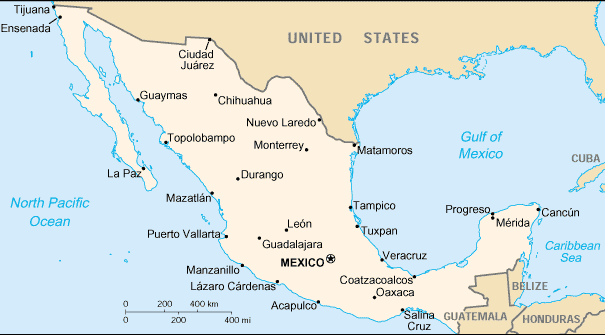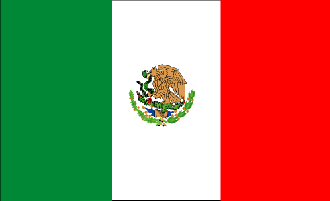
|
Mexico
Background:
The site of advanced Amerindian civilizations, Mexico came under Spanish rule
for three centuries before achieving independence early in the 19th century.
Ongoing economic and social concerns include low
real wages, underemployment for a large segment of the population, inequitable
income distribution, and few advancement opportunities for the largely
Amerindian population in the impoverished southern states. Vicente Fox of the
National Action Party (PAN) was sworn in on 1
December 2000 as the first chief executive elected in free and fair elections.
|

Climate and Terrain:
Climate: Varies from tropical to desert.
Terrain: High, rugged mountains; low coastal plains; high plateaus; desert.
Natural resources: Petroleum, silver, copper, gold, lead, zinc, natural gas,
timber
|
|
|
Economy overview:
Mexico has a free market economy with a mixture of modern and outmoded industry
and agriculture, increasingly dominated by the private sector. Recent
administrations have expanded competition in seaports, railroads,
telecommunications, electricity, natural gas distribution, and airports. Income
distribution remains highly unequal. Trade with the US and Canada has tripled
since the implementation of NAFTA in 1994.
|
|